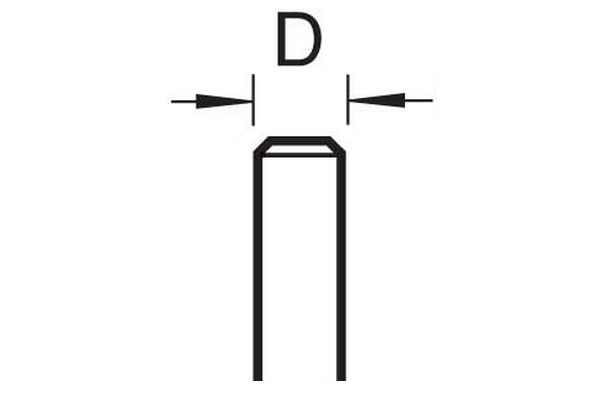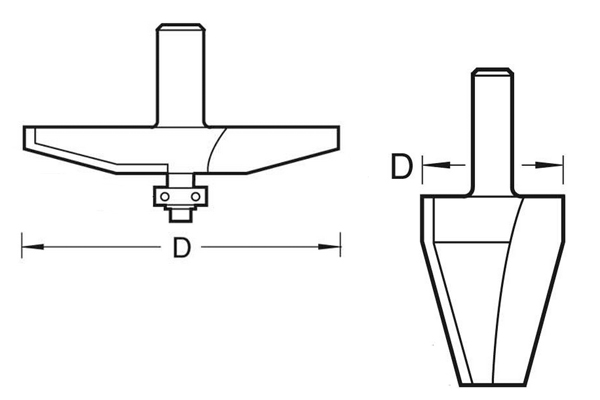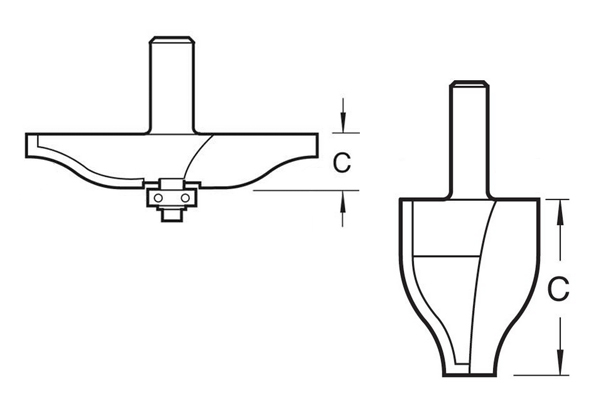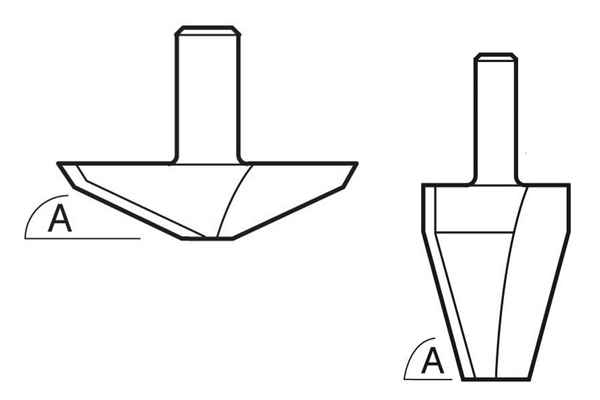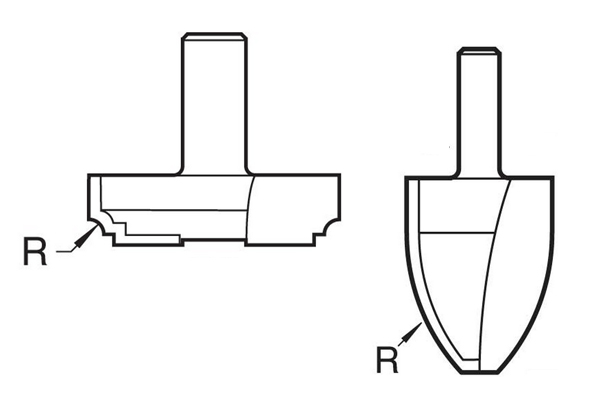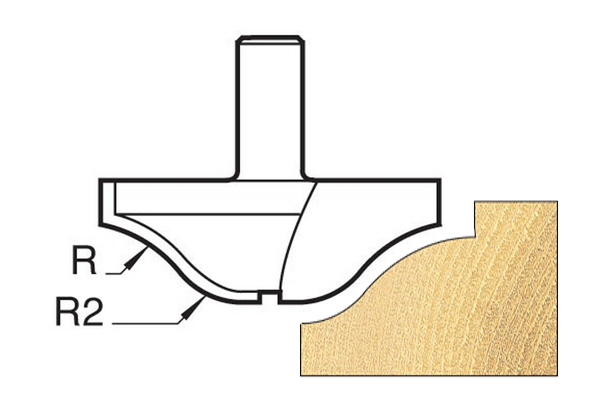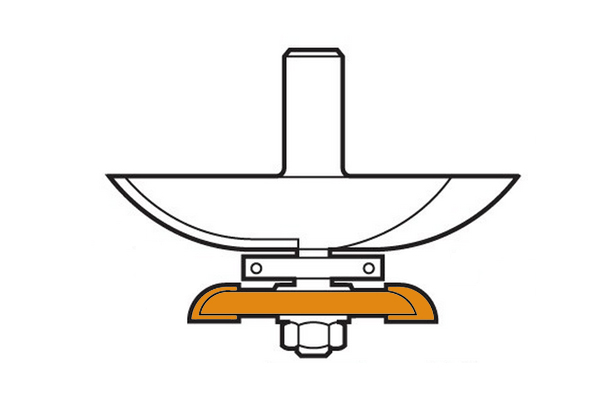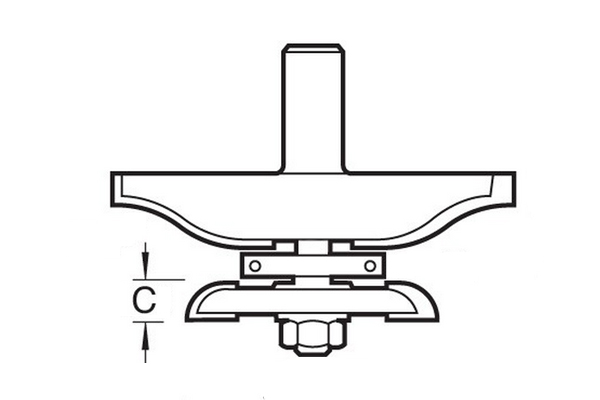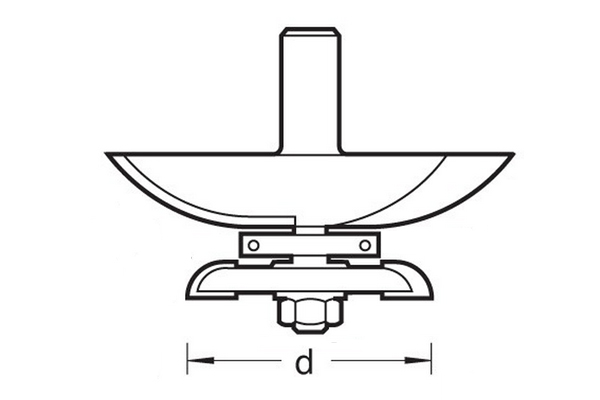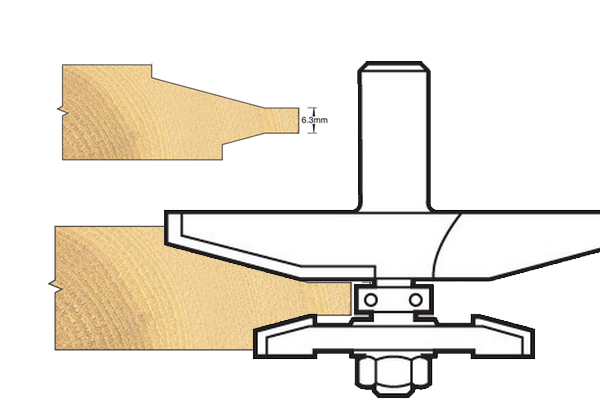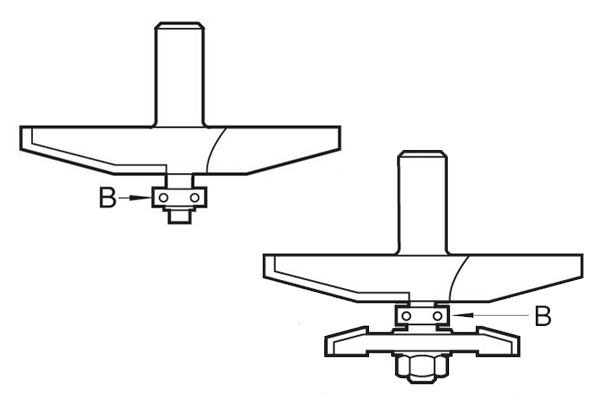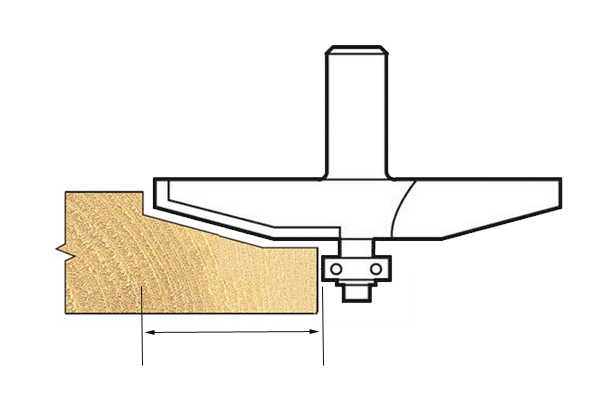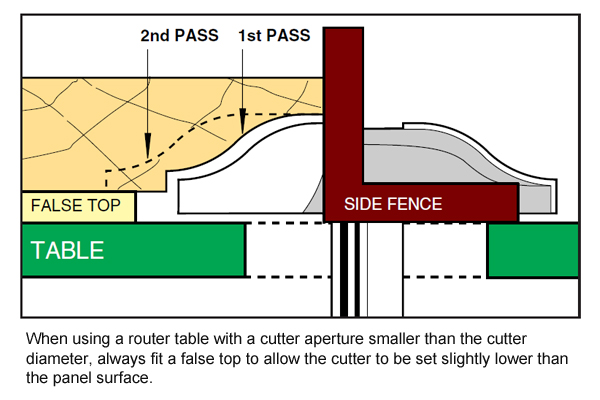What are the different typesof raised panel router cutter? |
||||
 |
||||
|
There are two main types of raised panel router cutter: |
||||
Horizontal raised panel cutters |
||||
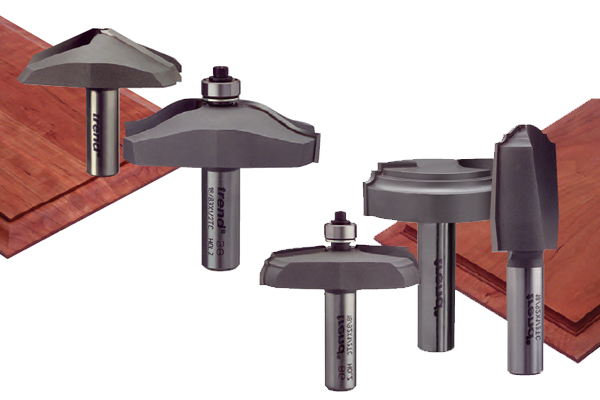 |
Horizontal raised panel cutters are the most common type. All but one of the CraftPro panel raisers is a horizontal cutter.
To use them, you position the panel face down on the router table and use either the cutter's bearing guide or the table fence to control the width of the cut. |
|||
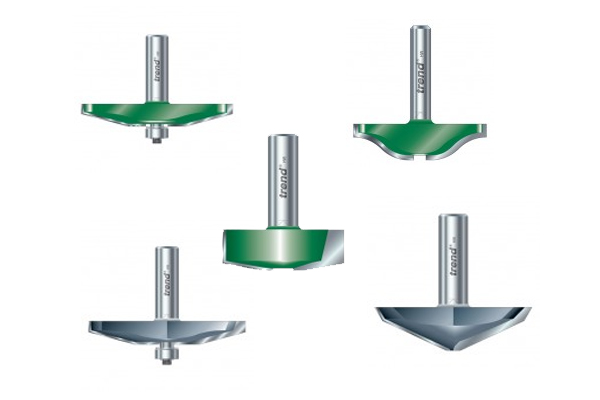 |
These cutters are available with or without bearing guides, and in a number of different profiles including bevel, ogee, radius, and classic.
Professional TCT horizontal raised panel cutters are split across three categories - Flat Roman ogee cutters, raised panel cutters, and raised bearing guided cutters. |
|||
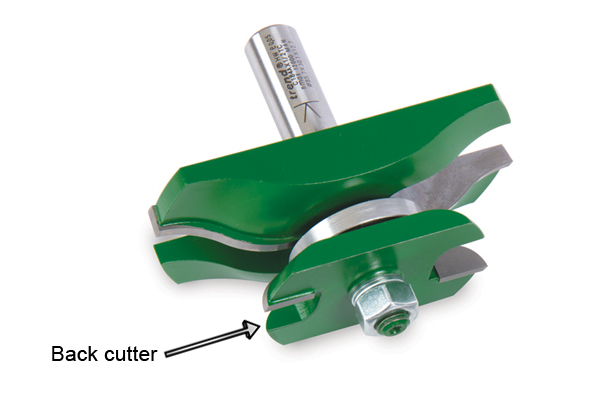 |
Horizontal raised panel cutters with back cutThese are horizontal raised panel cutters with an additional set of cutters located beneath the first. While the first set of cutters rout the face of the panel, this second set routs a rebate on the back. |
|||
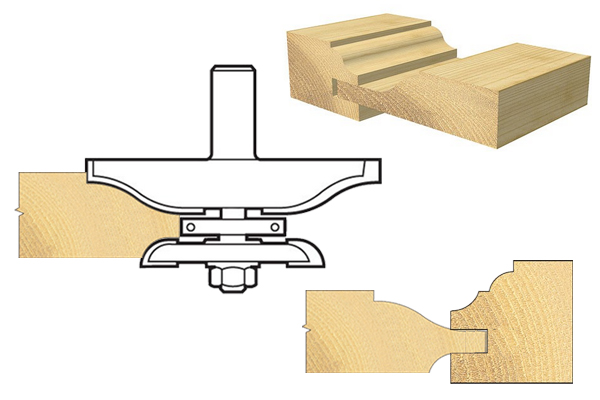 |
This ensures that the finished edge of the panel (also known as the tongue) will be of a specified thickness, and so provided your rail and stile grooves have been cut to accept this, your panel will fit perfectly into them.
Without the back cut feature, you would have to adjust the router cutter's height in the table so that the finished edge matches the rail and stile grooves. |
|||
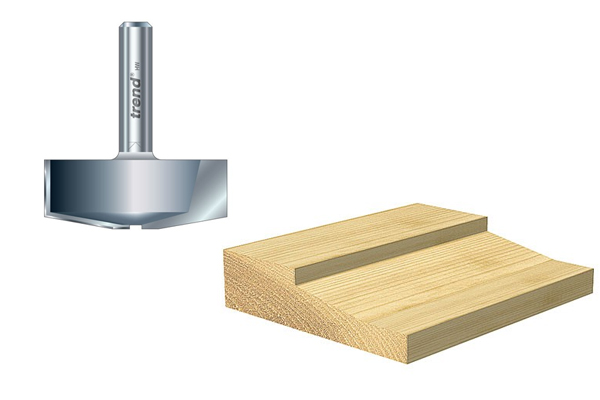 |
Bevel panel raisers and bevel raise panel cutters |
|||
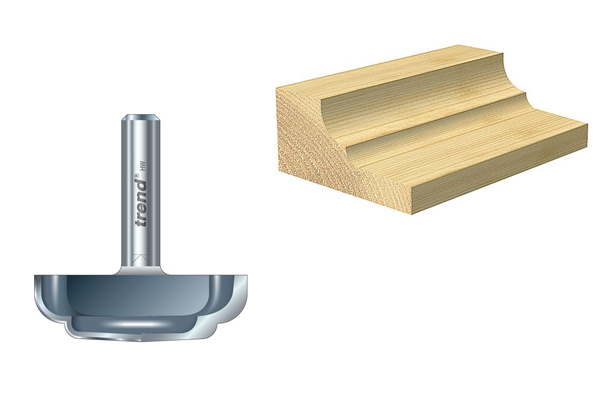 |
|
|||
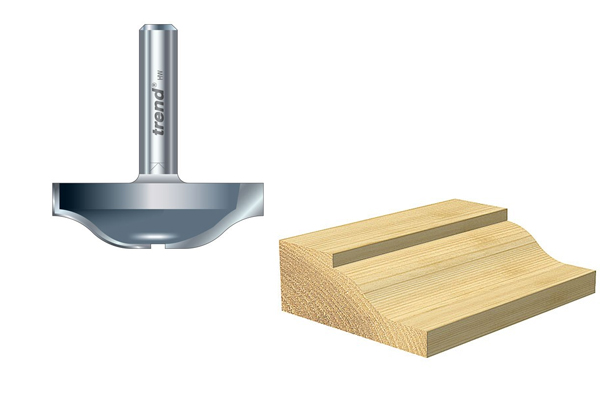 |
Ogee panel raisers and ogee raised panel cutters |
|||
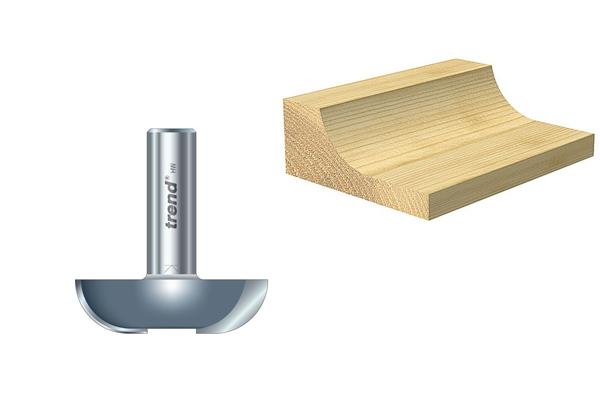 |
Radius panel raisers and |
|||
Vertical raised panel cutters |
||||
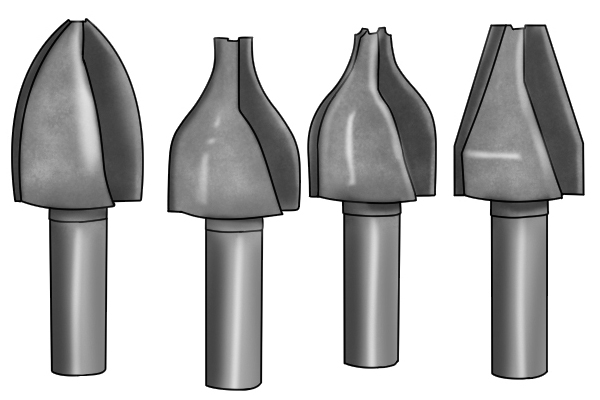 |
Like horizontal ones, vertical raised panel cutters are also used to cut away and mould the panel edge. The and the Professional TCT range includes four vertical raised panel cutters.
However, to use them, you are required to stand the panel up on its edge and pass it against the cutter, this can make them more difficult to use than horizontal panel cutters. |
|||
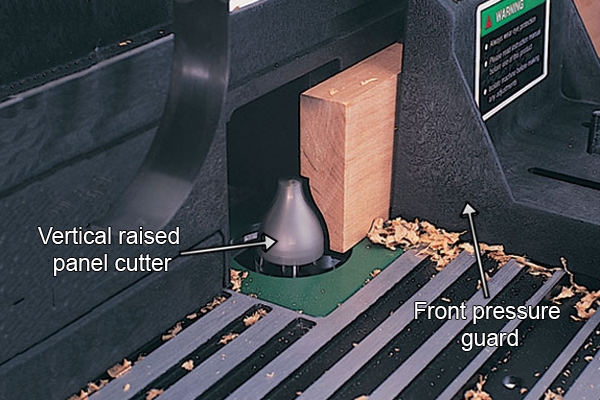 |
It may also be necessary to fit an extended height false face to the back fence of the router table, to support the workpiece more securely vertically.
A deep horizontal front pressure guard or vertical support will help ensure safety and accuracy by keeping the bottom edge of the workpiece flat against the fence face |
|||
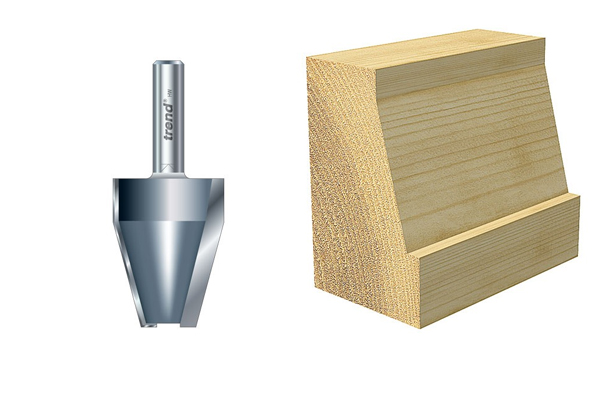 |
|
|||
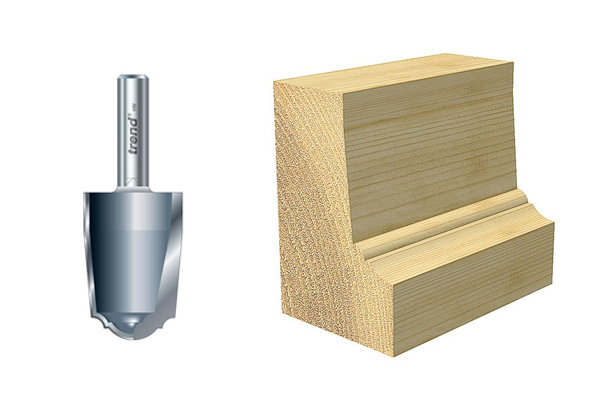 |
|
|||
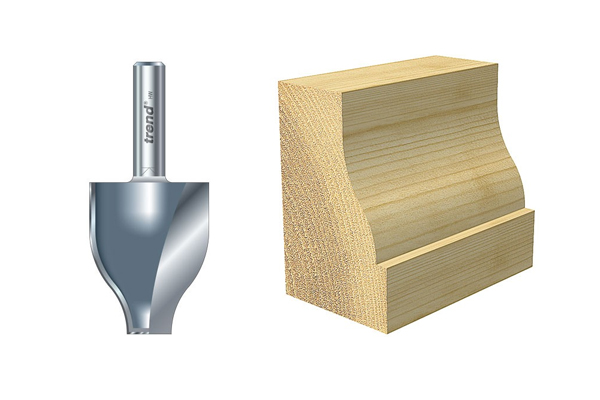 |
|
|||
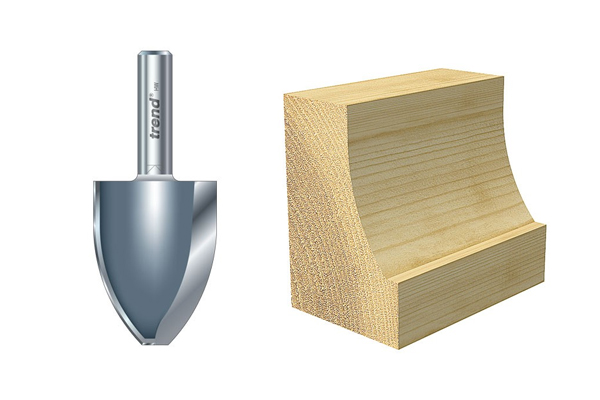 |
and |
|||
Which type of raised panel cutter should you choose? |
||||
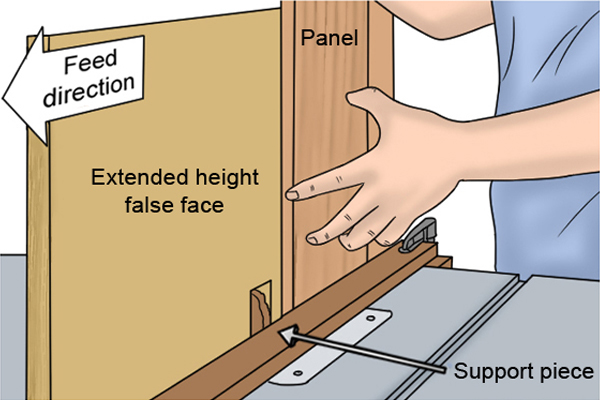 |
Vertical raised panel cuttersAs explained above, when using vertical cutters, you are likely to need a taller fence and additional support for the workpiece on the table. These accessories can be an inconvenience to purchase and set up if you don't already have them to hand. |
|||
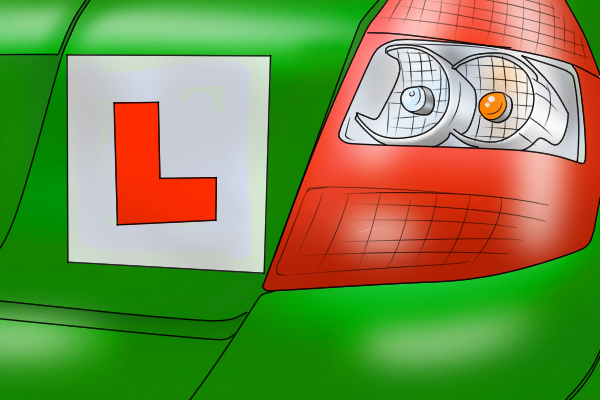 |
Horizontal raised panel cuttersHorizontal raised panel router cutters are much wider than vertical ones, and so less experienced router users may be less inclined to use them. However, with horizontal cutters it's easier to get a smoother finish due to their shearing action, in comparison to the chipping action of a vertical cutter. |
|||






